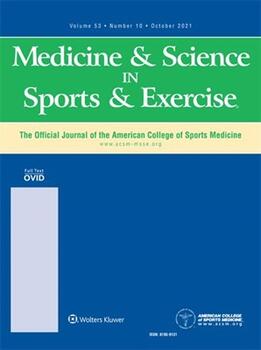Impellizzeri FM1, Rampinini E1, Maffiuletti N2, Marcora SM3
1, Human Performance Lab, Mapei Sport Research Center, Castellanza, Varese, Italy; 2, Neuromuscular Research Laboratory, Schulthess Clinic, Zurich, Switzerland; 3, School of Sport, Health, and Exercise Sciences, University of Wales–Bangor, United Kingdom

PURPOSE: To establish the validity and reliability of a new vertical jump force test (VJFT) for the assessment of bilateral strength asymmetry in a total of 451 athletes. METHODS: The VJFT consists of countermovement jumps with both legs simultaneously: one on a single force platform, the other on a leveled wooden platform. Jumps with the right or the left leg on the force platform were alternated. Bilateral strength asymmetry was calculated as [(stronger leg – weaker leg)/stronger leg] x 100. A positive sign indicates a stronger right leg; a negative sign indicates a stronger left leg. Studies 1 (N = 59) and 2 (N = 41) examined the correlation between the VJFT and other tests of lower-limb bilateral strength asymmetry in male athletes. In study 3, VJFT reliability was assessed in 60 male athletes. In study 4, the effect of rehabilitation on bilateral strength asymmetry was examined in seven male and female athletes 8-12 wk after unilateral knee surgery. In study 5, normative data were determined in 313 male soccer players. RESULTS: Significant correlations were found between VJFT and both the isokinetic leg extension test (r = 0.48; 95% confidence interval, 0.26-0.66) and the isometric leg press test (r = 0.83; 0.70-0.91). VJFT test-retest intraclass correlation coefficient was 0.91 (0.85-0.94), and typical error was 2.4%. The change in mean [-0.40% (-1.25 to 0.46%)] was not substantial. Rehabilitation decreased bilateral strength asymmetry (mean +/- SD) of the athletes recovering from unilateral knee surgery from 23 +/- 3 to 10 +/- 4% (P < 0.01). The range of normal bilateral strength asymmetry (2.5th to 97.5th percentiles) was -15 to 15%. CONCLUSIONS: The assessment of bilateral strength asymmetry with the VJFT is valid and reliable, and it may be useful in sports medicine.
Med Sci Sports Exerc. 2007 Nov;39(11):2044-50.
PMID: 17986914 DOI: 10.1249/mss.0b013e31814fb55c